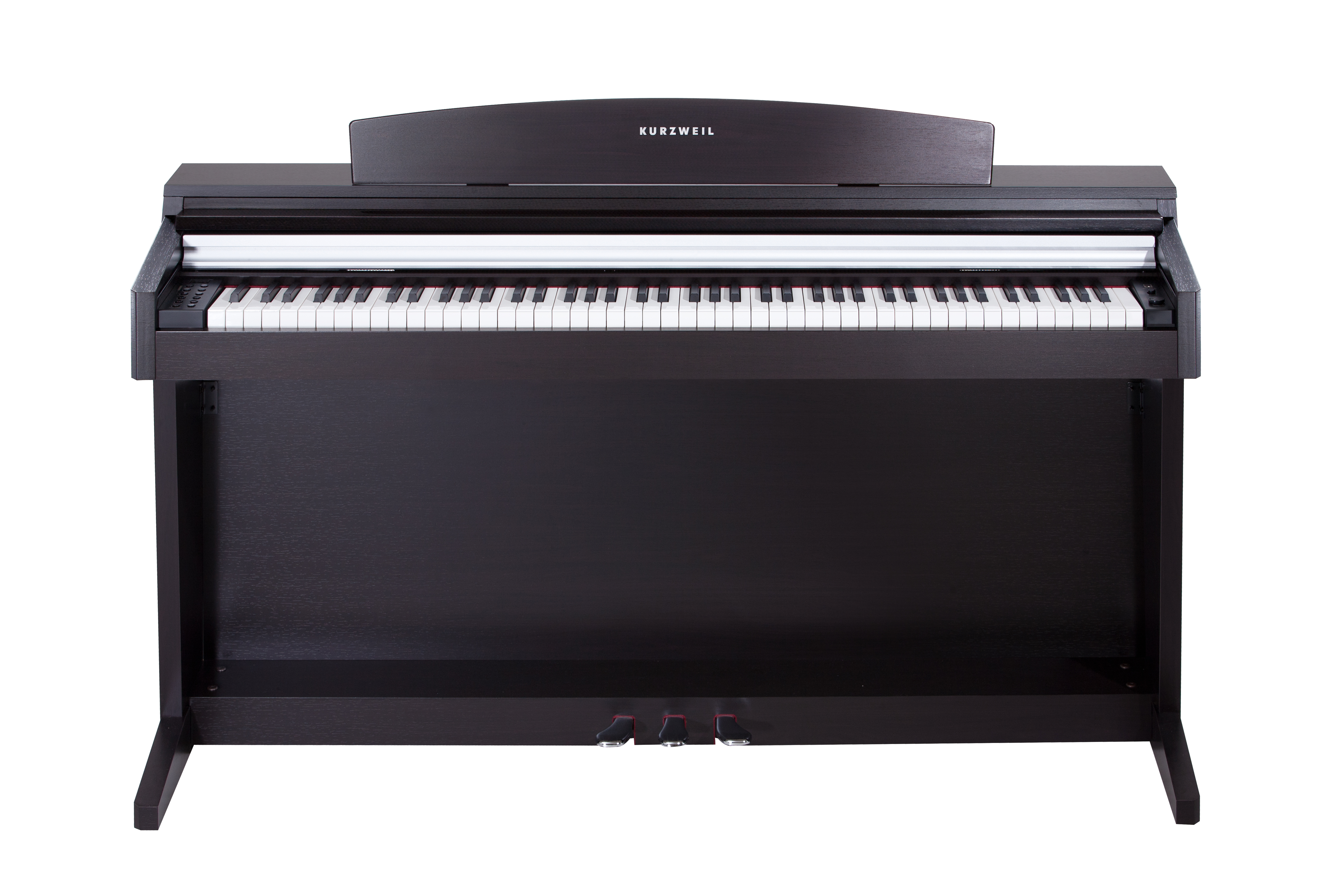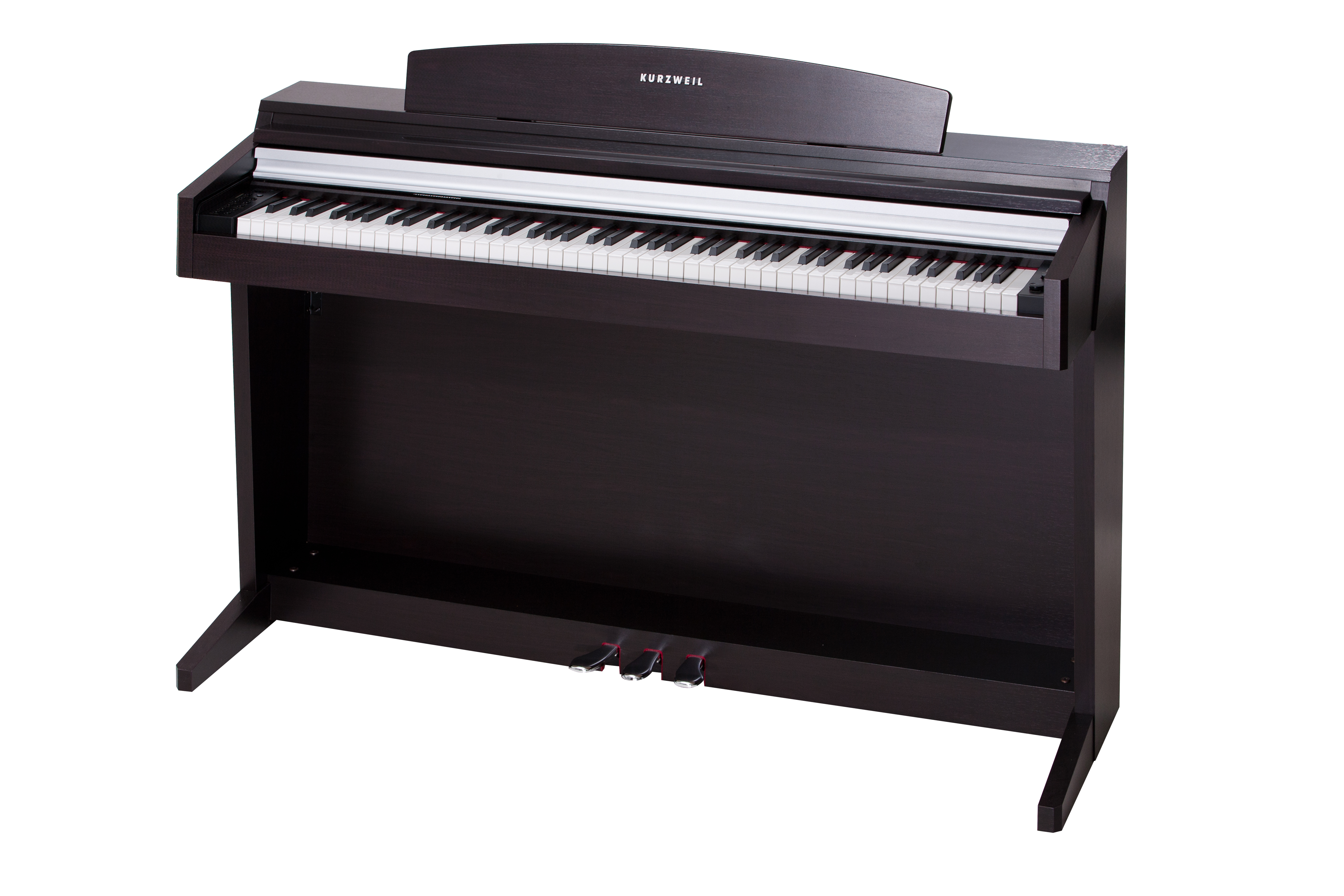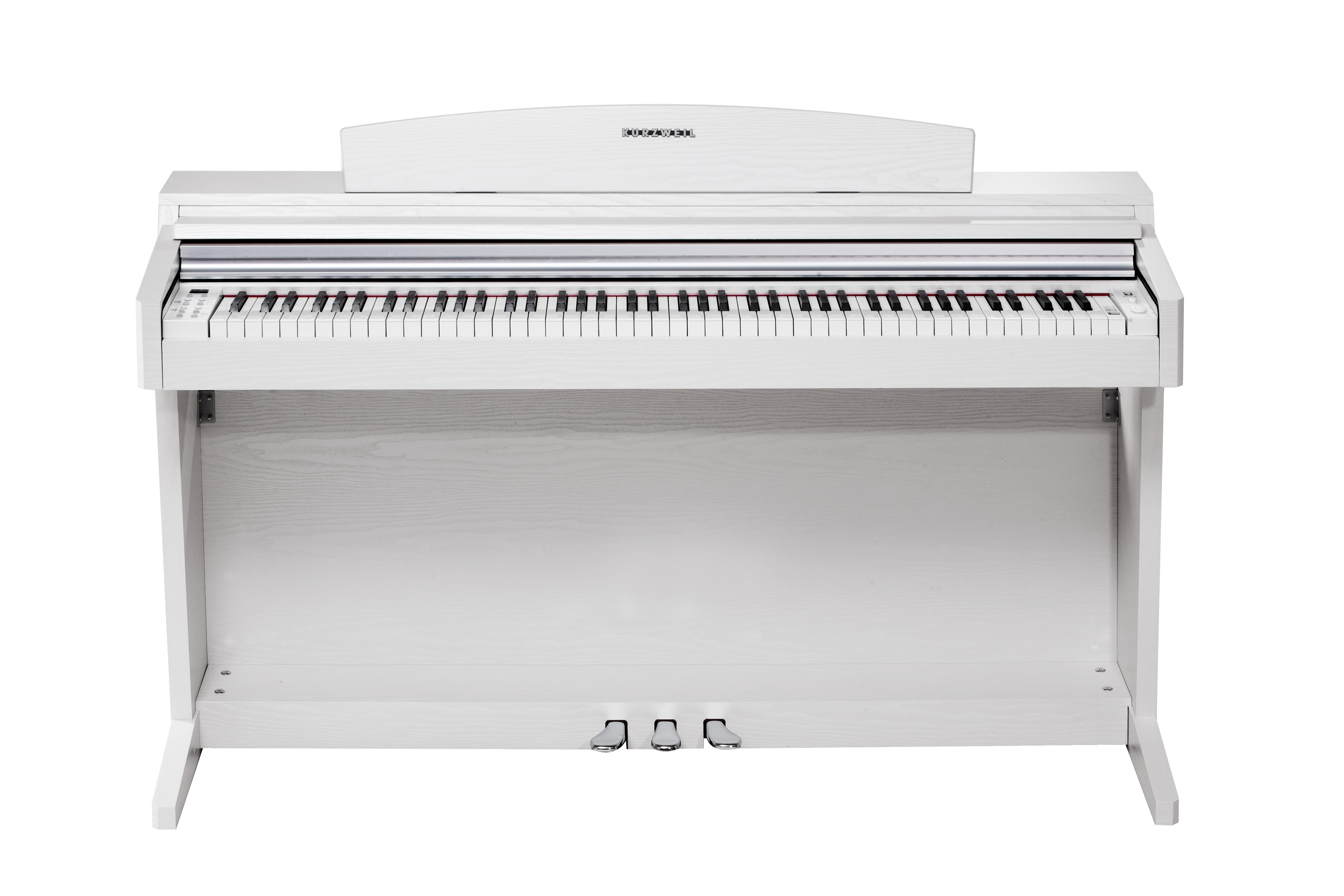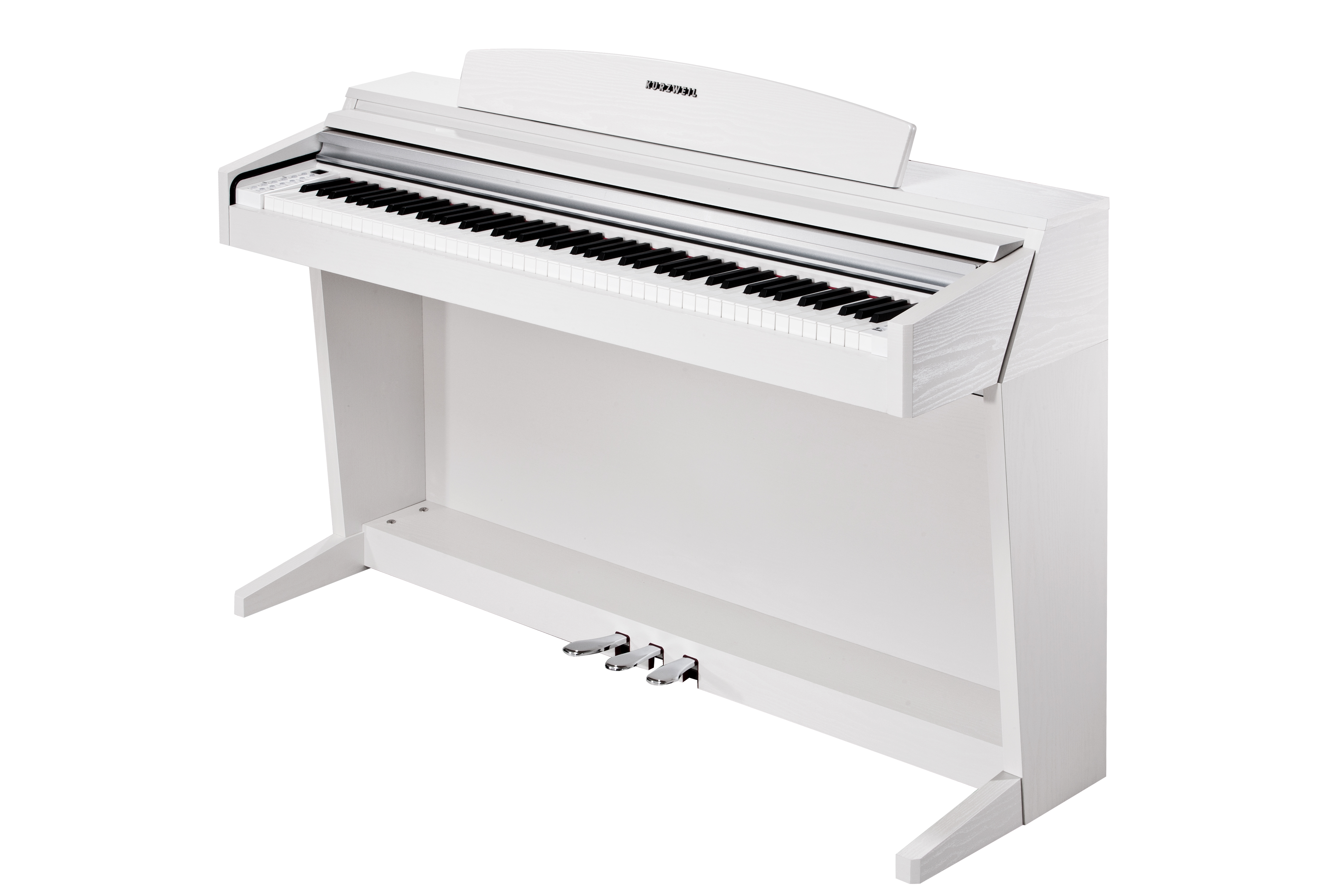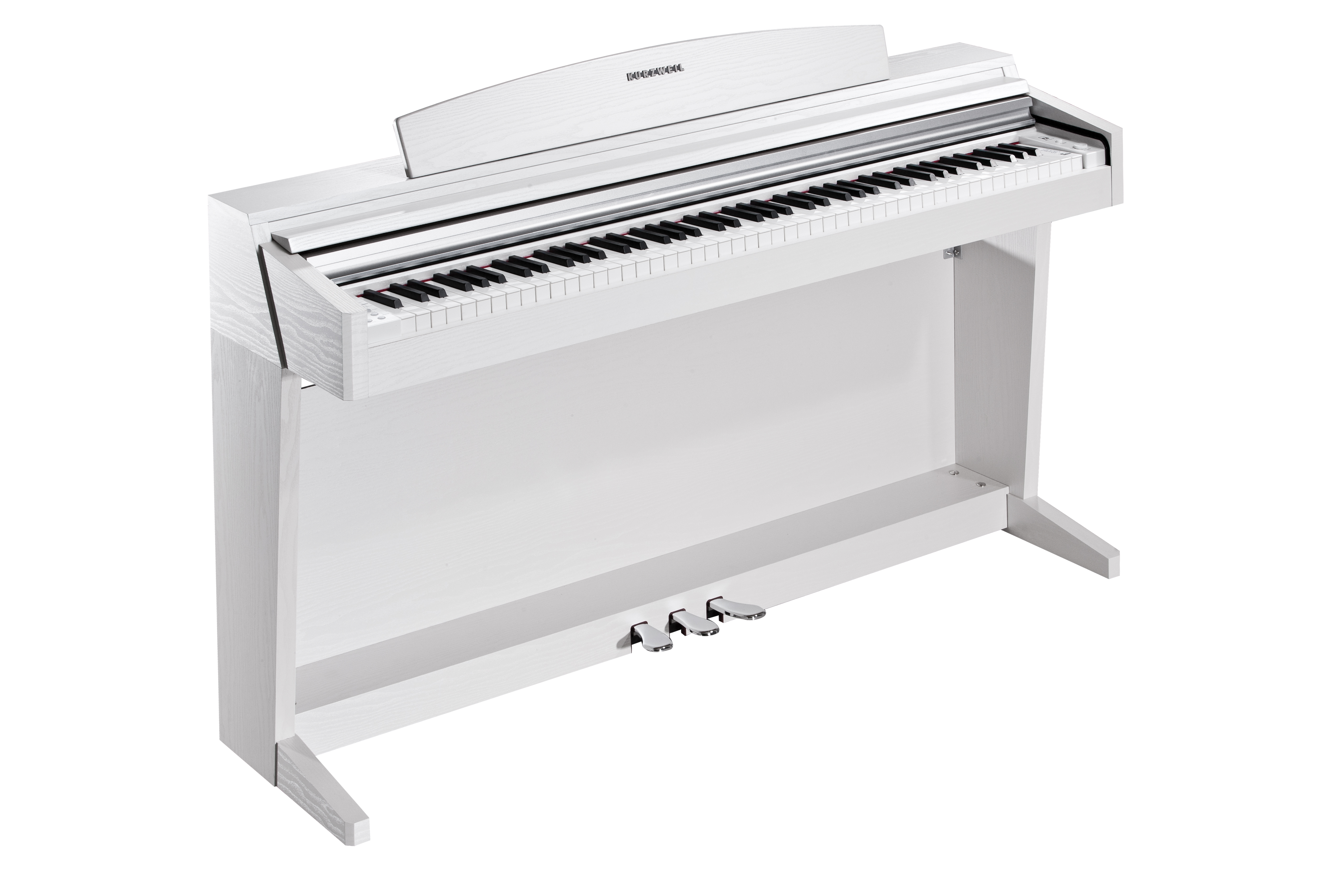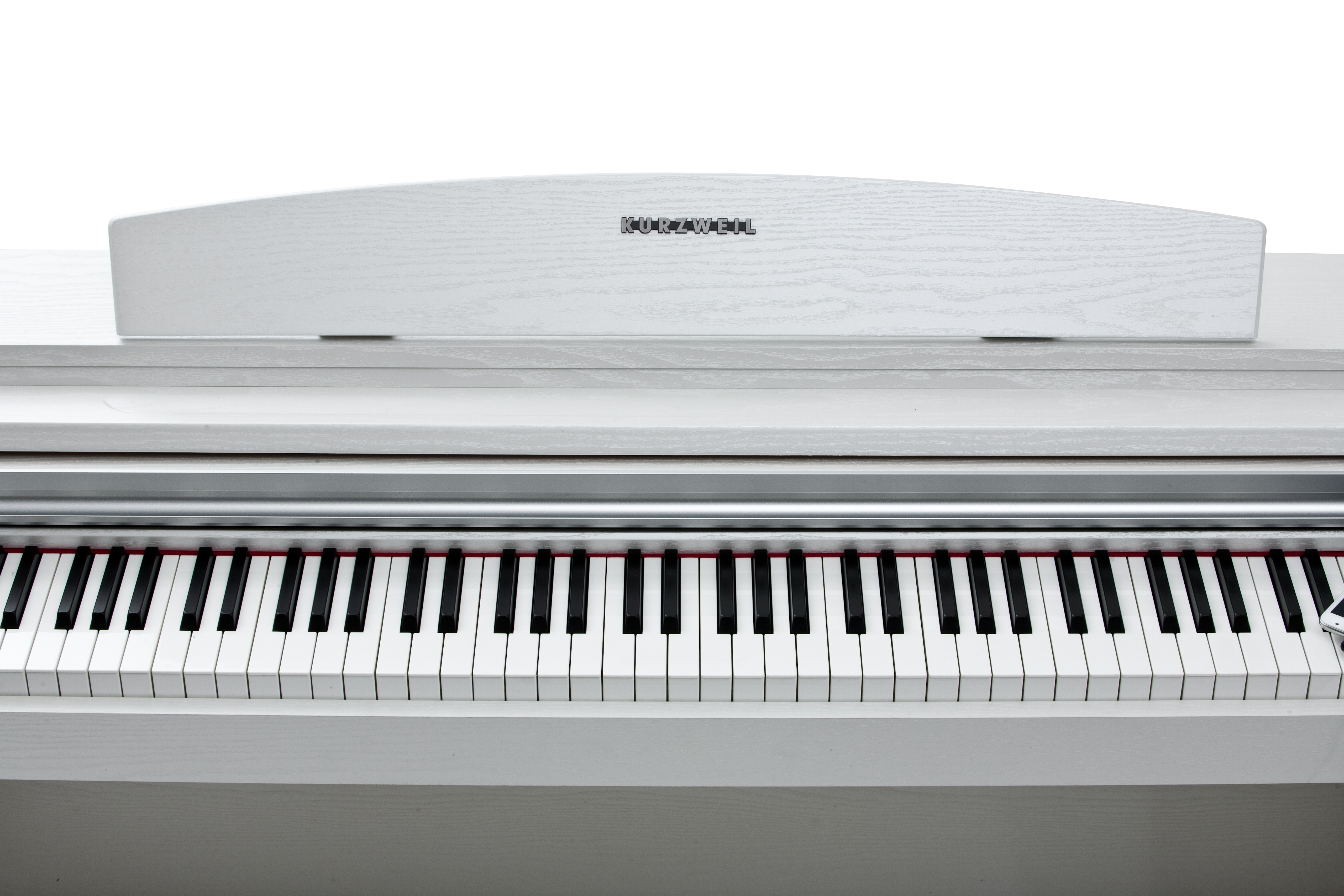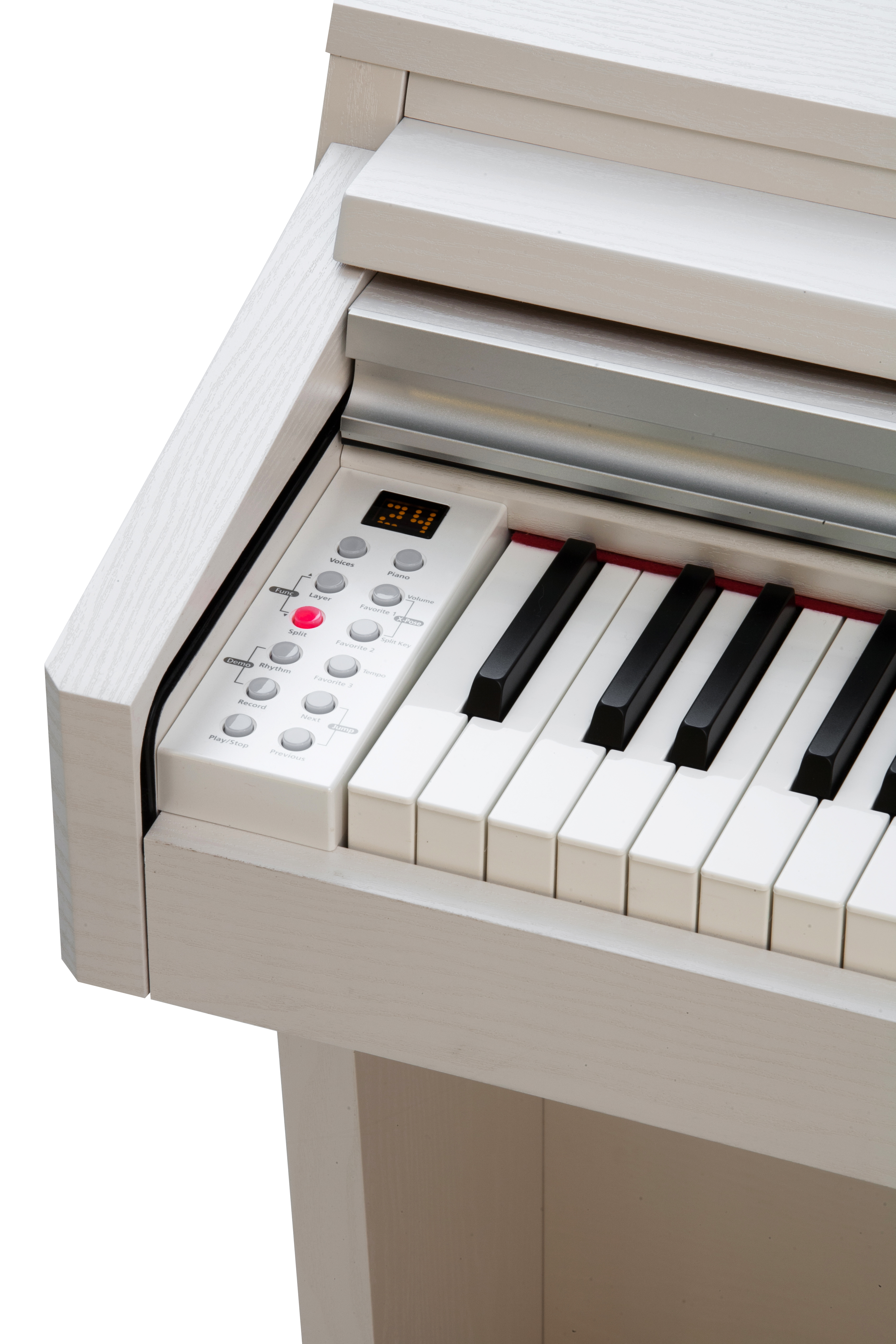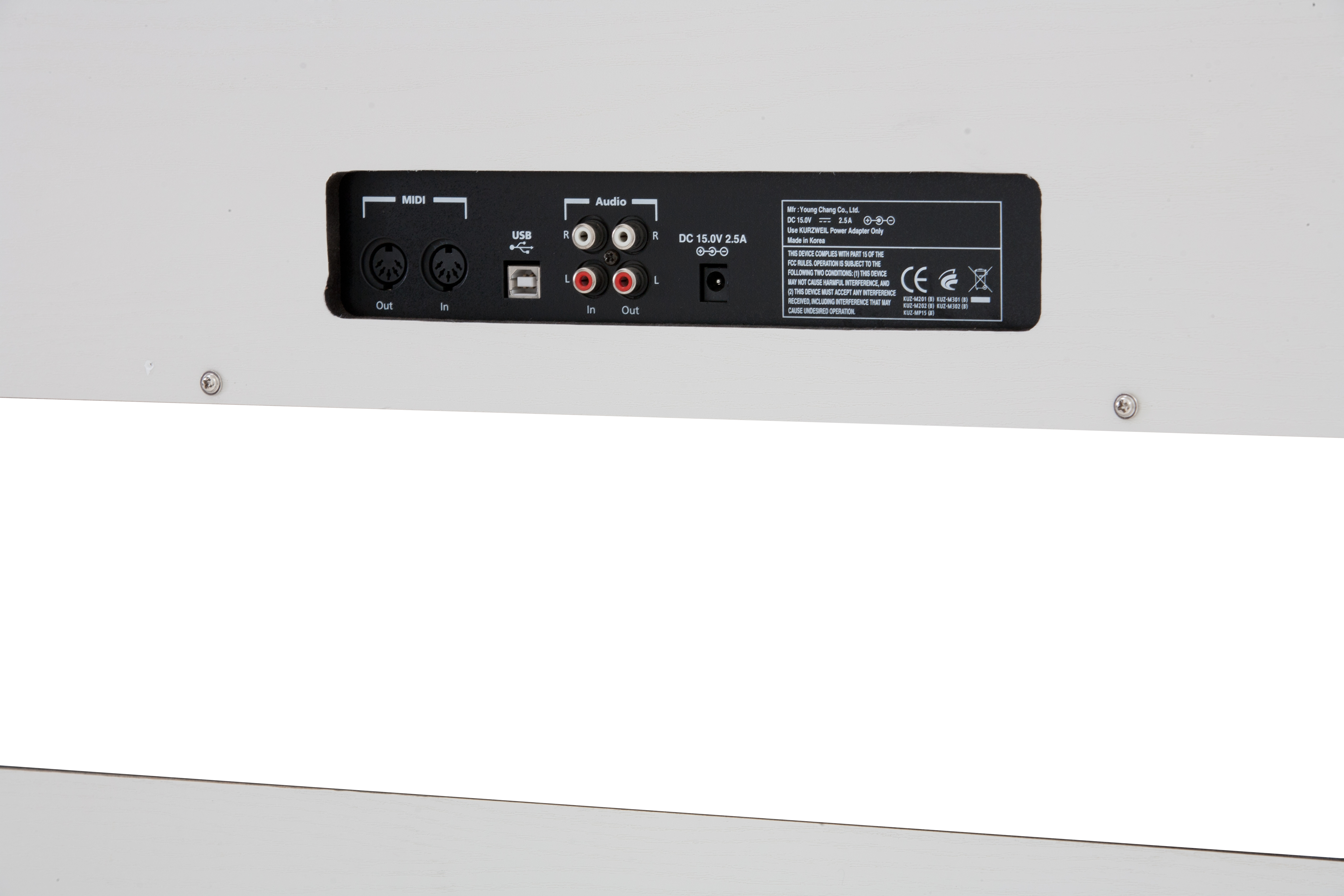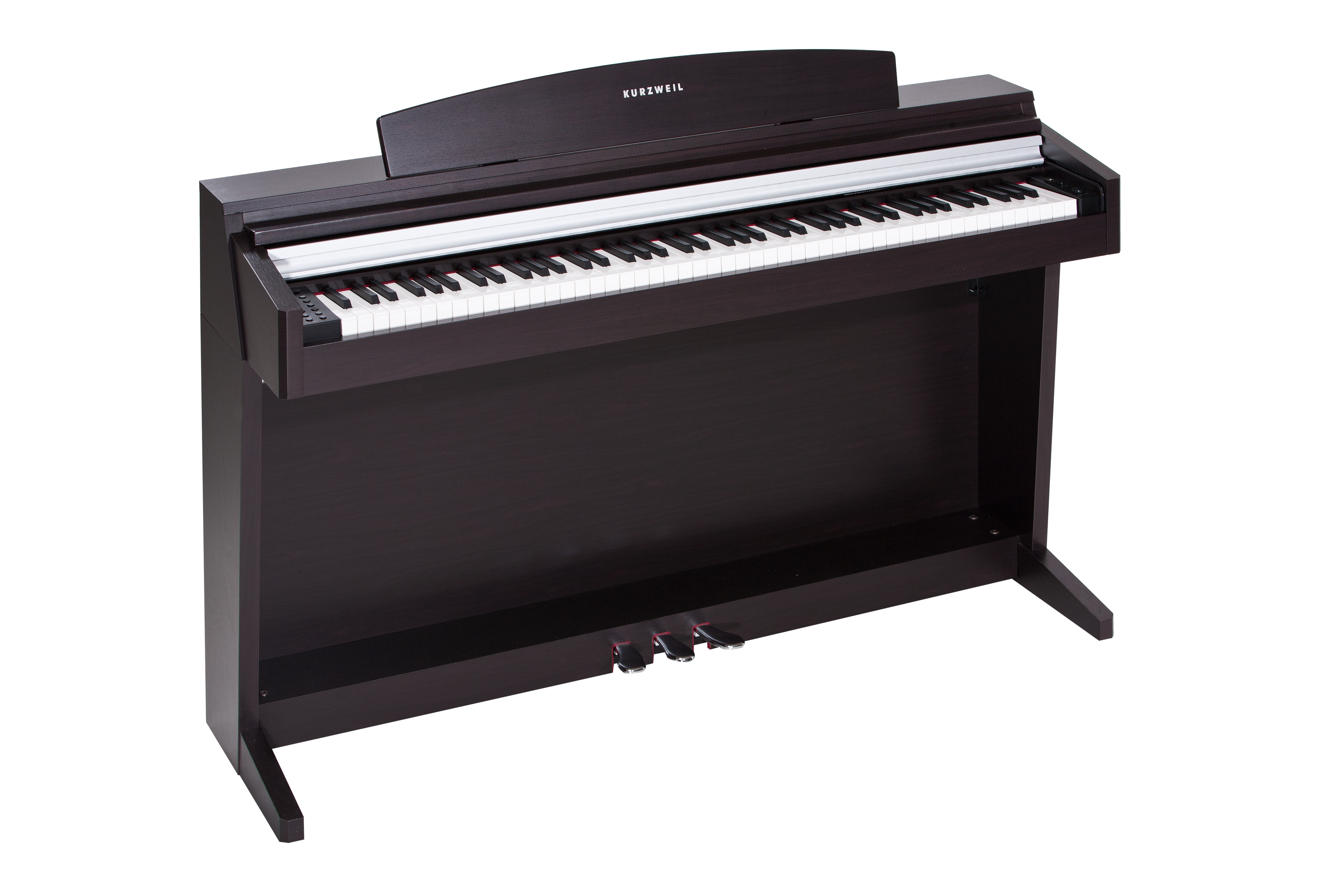
Legacy Model
Downloads and support materials maintained here as a courtesy to owners.
M-1 OVERVIEW |
Graded Hammer Action Keyboard
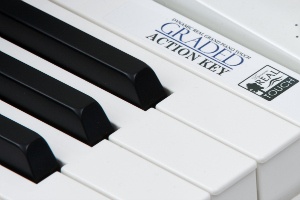
88 note, fully weighted graded hammer action keyboard with adjustable touch sensitivity.
20 Inspiring Factory Presets
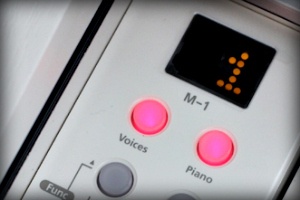
Featuring some of the the best sounds from our PC3 series, including the famous Kurzweil Triple Strike Grand Piano as well as top notch electric pianos, orchestral and acoustic instruments.
29 Rhythm Accompaniment Patterns
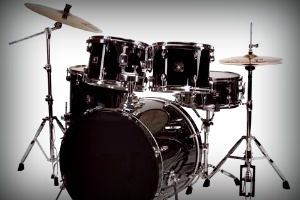
Pre-recorded drum tracks in a variety of styles to play along with.
Modern Cabinet Design
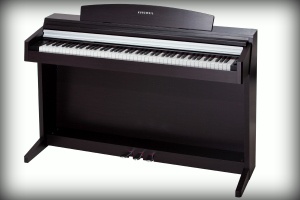
Spinet-stye cabinet available in simulated rosewood or white finishes, featuring a 15 Watt, 2-speaker, stereo sound system, built-in music stand and slide-out fallboard.
All specifications subject to change without notice.
Simple and Intuitive Controls

Elegant control panel featuring easy access to all system functions, including Split/Layer, Transpose and One-Touch Favorites.
Built-In Pedals
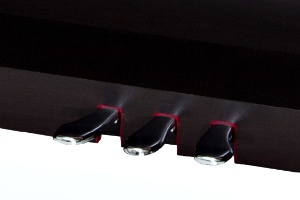
Sustain, Sostenuto and Soft Pedals standard.
SPECS |
All specifications subject to change without notice.
| Keyboard: | 88 Note fully weighted, graded-hammer action with adjustable touch sensitive keys (LK-40 GH) |
| Keyboard Sensitivity: | 10 selectable response levels |
| Display: | Scrolling alphanumeric LED |
| Polyphony: | 64 voice |
| Preset Programs: | 20 Expressive sounds including award winning Triple Strike Grand Piano, all taken from the PC3 |
| User Presets: | 3, one-touch recallable “favorites”, providing quick access to customized selections. |
| General MIDI: | No |
| Splits/Layers: | Quick Split/Layer, easy access with adjustable relative volume |
| Transpose: | Full transposition to any key, +/- two octaves |
| Tune: | Adjust by Cents (+/- 100 cents) |
| Effects: | Dual ambience and effect processors (reverberation and chorus). Rich and complex effects from the PC3 Series |
| Drum Patterns: | 29 pre-recorded interactive patterns in a variety of styles |
| Metronome: | Yes |
| Recorder/Sequencer: | 1-Track; 4 Song capacity |
| Sound System: | 15-watt, 2-speaker stereo sound system |
| Audio Outs: | Stereo left/right RCA line outs (for connecting to external amplification) |
| Audio Ins: | Stereo left/right RCA line ins (for connecting external sound sources)
(1) 1/8″ stereo MP3 IN |
| Headphones: | (2) 1/4″ stereo headphone outs |
| MIDI I/O: | MIDI In and Out connectors |
| USB: | (1) port; “Plug and Play” USB functionality allows MIDI over USB for connecting to/from an external computer sequencer; no software driver needed |
| Pedals: | (3) built-in switch-type: sustain, sostenuto, soft |
| Finishes: | Simulated Rosewood & White |
| Bench: | Matching bench included |
| Dimensions: | 33″(H) x 55.4″ (W) x 16.3″ (D)
83.8 cm (H) x 140.8 cm (W) x 41.4 cm (D) |
| Weight: | 107.25 lb / 48.65 Kg |
| Power: | DC 15V 2.5A external power supply |
FAQs |

